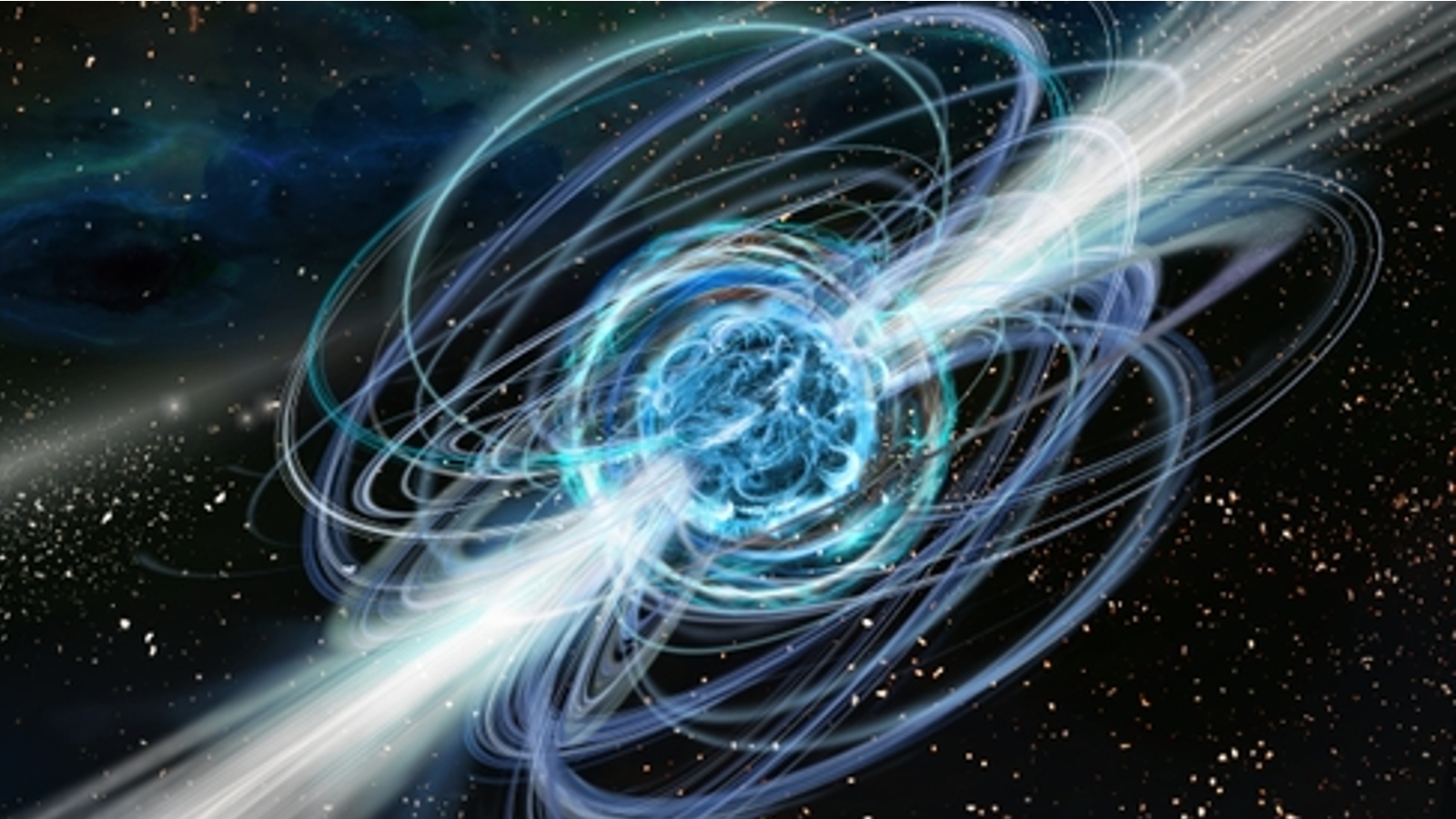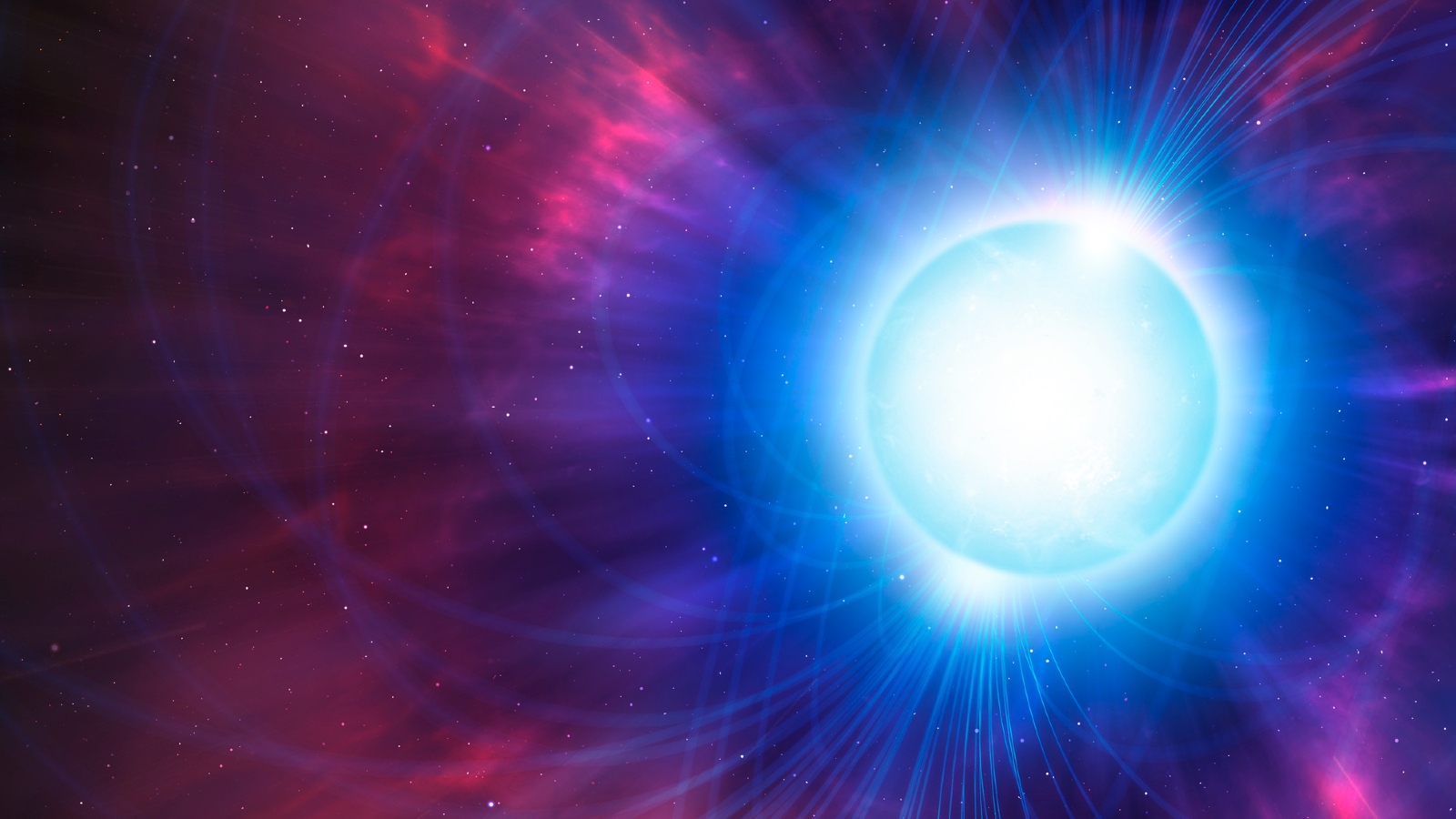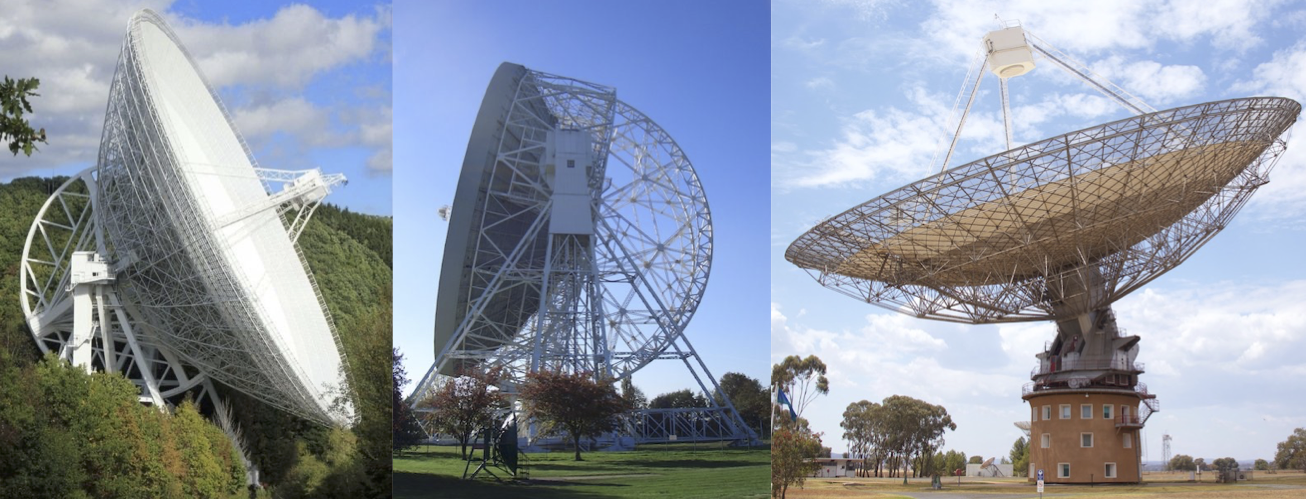
A magnetar that "woke up" in 2018 after years of radio silence emitted strange, wobbly radio signals — and scientists cannot explain them, new studies show. The findings suggest that the universe's most powerful magnets are even weirder than we initially realized.
Magnetars are a rare, juvenile class of super-dense collapsed stars, known as neutron stars, with supercharged magnetic fields trillions of times greater than Earth's magnetic field. Magnetars are most likely birthed by supernovas but can also be created by neutron star collisions. The energy from these cosmic events makes magnetars some of the fastest-spinning objects ever discovered. But eventually, they lose energy and transition into regular neutron stars as their spin rate slows. Only around 30 magnetars have been detected to date.
Some magnetars occasionally explode violently as their complex magnetic fields unwind and snap, causing them to shoot out vast amounts of radiation into space in the form of X-rays, gamma rays and, most commonly, radio pulses. These outbursts, which can explode with the force of millions of suns, enable astronomers to spot the magnetars. But after several years, these outbursts diminish, and the rapidly spinning stars disappear from view once more.
In December 2018, a city-size magnetar named XTE J1810-197, which was first discovered in 2003, reappeared to astronomers thanks to one of these outbursts after more than a decade of radio silence. Ever since, the magnetar, which is located around 8,000 light-years from Earth, has continued to spit radio pulses toward our planet, enabling researchers to monitor the celestial object with some of the world's largest radio telescopes.
In a pair of new studies, which were both published April 8 in the journal Nature Astronomy, researchers analyzed the radio pulses given off by XTE J1810-197 and discovered a weird "wobbling" in these signals. Further analysis revealed that these fluctuations could not be explained by any known magnetar behavior, suggesting something completely new was at play.
Related: Bizarre new cosmic object is the most magnetic star in the universe

"Our findings demonstrate that exotic physical processes are involved in the production of the radio waves we can detect," Patrick Weltevrede, an astrophysicist at the University of Manchester in the U.K. and co-author of both new studies, said in a statement. But at present, the team cannot explain what these novel processes are.
Initially, researchers assumed that the signal's wobble was the result of "free precession," where slight asymmetries in the magnetar's spherical shape cause it to wobble like a spinning top. However, around three months after XTE J1810-197 reawakened, the wobbling suddenly stopped even though the signals did not, meaning that either the magnetar changed shape (which is very unlikely, the researchers say) or free precession was not the cause of the signal in the first place.

Instead, researchers now believe that a region of undulating plasma near one of XTE J1810-197's magnetic poles acted as a "polarizing filter," which wobbled the radio pulses as they were emitted from the baby neutron star. But "how exactly the plasma is doing this is still to be determined," Marcus Lower, an astrophysicist with the Commonwealth Scientific and Industrial Research Organisation (CSIRO) in Australia and lead author of one of the studies, said in the statement.
Researchers will now search for these wobbles in signals from other radio-emitting magnetars to see if they can get to the bottom of the mystery. They hope that by solving this puzzle they will be able to better understand how neutron stars form and how matter behaves at such incredibly high densities.
"Like cats, it's impossible to predict what a magnetar will do next," three of the researchers wrote in an article published on The Conversation. "But with current and future upgrades to telescopes, we are now more ready than ever to pounce the next time one decides to awaken."







